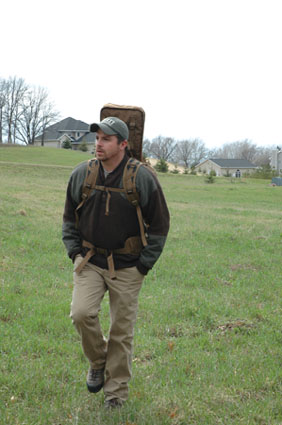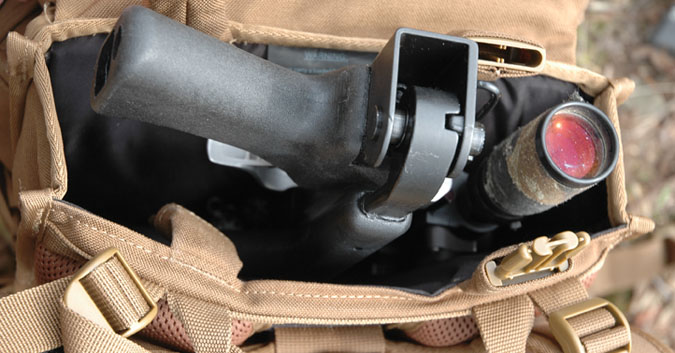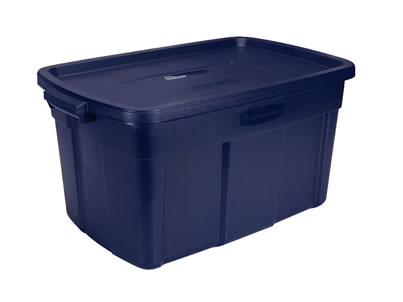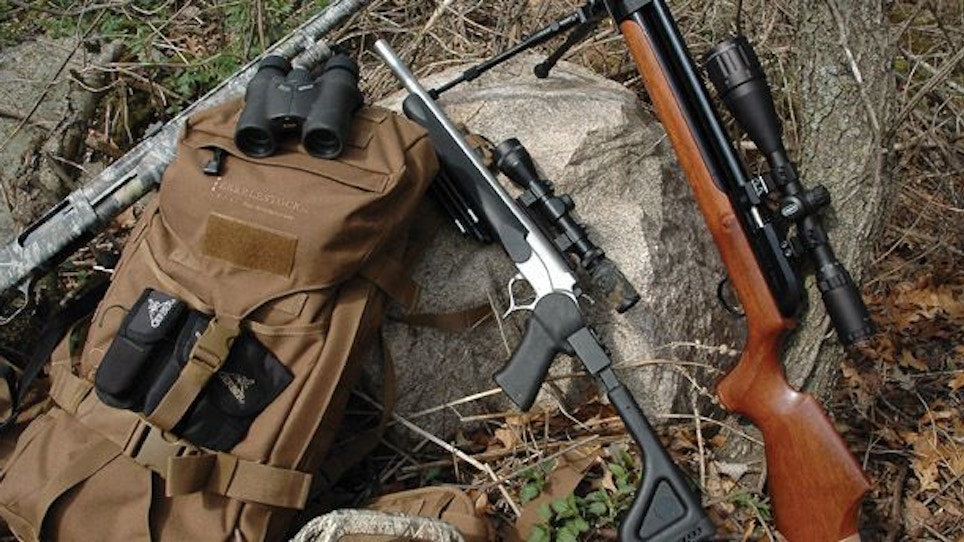Hunting coyotes in urban settings? It may sound crazy at first blush, but don't overlook the possibilities. With careful planning and some smart tactics that may be different from normal "out in the fields" strategy, you can have good success and fly under the radar.
Check out these tips for better urban predator hunting.
This type of hunting is not about knocking on doors and asking permission. Unlike ranchers who have seen stock killed by coyotes and beg you to come hunting, suburbanites are not open to the idea. I recall my first and last door-knocking experience. Upon knocking on the door, a soccer mom in a robe appeared.
"Excuse me Ma'am, I noticed you have quite a large wooded area behind your house, would you mind if my brother and I coyote hunted there?"
"Hunt?" with a slightly detached, puzzled look on her face "… as in, like, kill?"
"Well, yeah, that might happen if it works out right."
With a look of revulsion and distaste she stammered, "Absolutely not!" and slammed the door.
So much for that tactic. You can generally forget private property unless you know the owners personally and they invite you. But there are other options. Some parks might allow hunting. Sometimes large timber companies own the title to suburban land and allow hunting. In many parts of the country, undeveloped old school lands may be legal to hunt. You just have to get a plat map from city or county offices and get to work.
Over the years I have had mixed success with land developers. I talked to a couple of developers who owned a couple hundred acres that were not going to be developed for a few years. I asked permission to hunt and, while they were worried about liability, the actual hunting didn't bother them. One said, verbatim, "I can’t give you permission. My lawyers would come unglued over the liability of letting anyone on the property for any reason, but I absolutely don't care and no one is ever out there during the weekend." He then winked. I hunted that property nearly every weekend for years and never had a problem. Old landfills that have been turned into green spaces might also provide another opportunity, provided they are decommissioned and open for public recreational use.
Over time, you will develop a nose for suburban hunting locales — you'll no longer be looking for the wide-open vistas or for ranchers with thousands of acres. A 5-acre patch of good cover is a stand, and a 40-acre patch can be heaven. In the 'burbs, small plots concentrate predator populations.
Know the Law and Local Hunting Ordinances
Suburban hunting is a bit trickier when it comes to legality. In suburban settings you have to pay more attention to laws regarding shooting within a certain proximity to buildings and around schools, to noise ordinances and to designated "no shooting" or (sometimes) "no hunting" zones.
It can get complicated, which is why few people try it, but that's why it is such good hunting. If you put in the legwork, research local ordinances, spend time talking to local police to clarify their interpretation of laws, and generally do your homework, phenomenal hunting can be the result.
It's a good idea to print all applicable laws and local ordinances and keep them folded in a sealable bag on your person while hunting. It's not uncommon for local law enforcement officers to not know the laws regarding hunting and discharging firearms in specific municipalities, if only because it's such a rare occurrence. They're just doing their job if they do "check you out," so be respectful.
Maintain a Low Profile While Hunting
When hunting suburbia I am ultra-sensitive about remaining under the radar. The reason I put effort into avoiding detection is not because anything I'm doing is illegal. In fact, I'm meticulous about checking all laws.
It's because it's not worth the hassle of dealing with anti-hunters. They're devoid of facts and full of emotionally charged fears and hatred. The first time you come back to a pickup and find slashed tires, a rock through the window or a key mark down the door, you’ll realize staying undetected is a pretty good idea.
There are also good reasons to stay undetected, beside the possibility of damage to your personal property. I've seen more than one legal hunting area get shut down by anti-hunting pressure. I've seen counties that were opened to hunting suddenly enact a no-shooting ban after a bunch of concerned homeowners got vocal at a county meeting. For suburban hunting, it's best to stay as hidden as a coyote if you want it to last very long.
Unconventional Hunting Camouflage
To maintain a low profile, re-evaluate your clothing and change accordingly. I play down my hunting clothes to what I call "granola-munching, hiker casual."
This has nothing to do with not being proud of my sport or acquiescing to anti-hunters; it's simply an act of self-preservation. While most of these people abhor the fact that their pretty Persian kitty got plucked off their deck, they hate the thought of hunters nearly as much. By camouflaging your camouflage you avoid a lot of problems.
In addition to remaining hidden from anti-hunters, it isn't a bad idea to stay hidden from other hunters as well. Suburbia is a microenvironment and can tolerate only so much pressure. Once you find a productive honey hole, you want to keep it secret. All it takes is one hunter seeing you entering an area, obviously dressed to hunt, and they'll figure out they can legally hunt that same spot.
When I am go into areas where I can be seen from passing cars, near housing developments or by "nature lovers" out for a hike, I generally wear tan or green Carhartt-style work pants and a solid green, tan or brown fleece jacket. If it's raining, Gore-Tex hiking-style rainwear in neutral colors works fine for keeping you dry and hidden. You look like a politically correct hiker.
Finally, look at your vehicle. Avoid an obvious hunting rig such as a lifted truck with hunting stickers plastered on the bumper and a gun rack in the window. For suburban hunting, the wife's car or family SUV is a better option. As long as you can get permission to put a dead coyote in it, any vehicle is fine — the less conspicuous the better.
Alternative Coyote Hunting Weapon

Suburban hunting requires extra thought on weapons. With centerfire rifles, stick to small calibers like the .17 Remington, .17 Fireball or a .22 Hornet because of their extremely low ricochet potential and diminutive report. Shotguns also have their place as often shots are close and running, and ricochets are a non-issue.
When hunting an area where I might encounter people I carry a tan Eberlestock backpack with my gear inside, which often includes a T/C Encore handgun with a 15-inch barrel. No one knows you have it and it works well for coyotes. If you prefer a rifle over a handgun, look for an easily hidden carbine model. The handiest suburban rig I ever built is a super-short T/C Encore in .223. I replaced the factory stock with a folding model by Choate, cut the barrel down to a compact (but still legal) 16 3/4 inches (available from T/C), and installed a lightweight bipod. With the stock folded, it can be stowed unobserved in any space.
If noise is a concern, take a look at bows, crossbows and, if they are legal, airguns. Anyone who reads Jim Chapman’s columns in Predator Xtreme knows that air rifles are not just for small game. Some are capable of handling nearly every type of big game if ranges are kept within moderation. They're ideal for suburban predator hunting and available in many calibers including .30, 9mm, .457 and .50.
I tested the .50 Dragon Slayer by Pyramid Air and was impressed. Out of the box this gun will shoot ½-inch groups at 50 yards all day, and produces over 250 foot pounds of energy — roughly three times that of a .22 long rifle with an entry wound twice the diameter. A little custom work can bump up the energy. Albeit hard to conceal due to its full-sized stature, what it lacks in compactness it makes up for in quietness. In addition to being quiet, in many areas where firearms are specifically prohibited, an air rifle might not be, but this does depend upon local ordinances.
After the Kill
 Success? Congrats! But now you need to get back to your vehicle and, hopefully, get things squared away without being seen by someone who may not know or care about what you're doing.
Success? Congrats! But now you need to get back to your vehicle and, hopefully, get things squared away without being seen by someone who may not know or care about what you're doing.
This gets dicey. Dragging a dead coyote through suburbia is tough, but leaving a skinned carcass in the woods can be worse. A few years ago a skinned carcass, originally thought to be a domestic dog, was spotted lying in the woods by a local hiker. The Seattle media quickly latched onto the story, speculating that it might have been the work of a demented person torturing people's dogs, or a possible future serial killer in the formative years, or a religious cult celebrating under the dark of the moon. They were all wrong, of course. It was just a skinned coyote that made local and national media — by happenstance, the work of one of my hunting partners.
To avoid this kind of attention, I use a drag and get the coyote out of the woods as quickly as possible. Store them in a plastic tote (with a snap-lock style of lid) lined with cat litter. When placed in the back of a truck or SUV, the box keeps the carcass out of sight and the cat litter keeps blood from running all over the place. I skin a coyote when I get home and dump the carcass on our property where it won’t be discovered.
Suburban hunting is fun, productive and represents a unique challenge. But it's not for everybody. It's not about beautiful open Western vistas and solitude. It's not easy to gain access, and you generally run into other people. But it can be rewarding and it's a great way to get out often without traveling far.
Besides, considering how close you’re likely to be to that suburban coffee shop, you can always get a vanilla chai latte before your first stand.
Bonus Tip: Another Removal Option
The Slay Bag is another removal option to consider for all predator hunting, whether you're out miles away from anyone or in the 8-acre block near the Shady Acres community park.
With a weight of just two pounds, the Slay Bag is constructed of durable, tough coated fabric to withstand rugged use. An adjustable strap allows for hands-free cross-body pulling or you can drag it behind. Either way, the Slay Bag protects your predator fur and conceals whatever's inside from prying eyes.
The bag is large enough to hold two average-sized coyotes. If you're out hog hunting, you could put in a small- to medium-sized hog. The Slay Bag rinses out easily and comes in gray, green or black.
Check it out here for more information.






